Kingsgrove Branch:
Schnap Electric Products Blog
Schnap Electric Products Blog Posts
USB C Data Cable
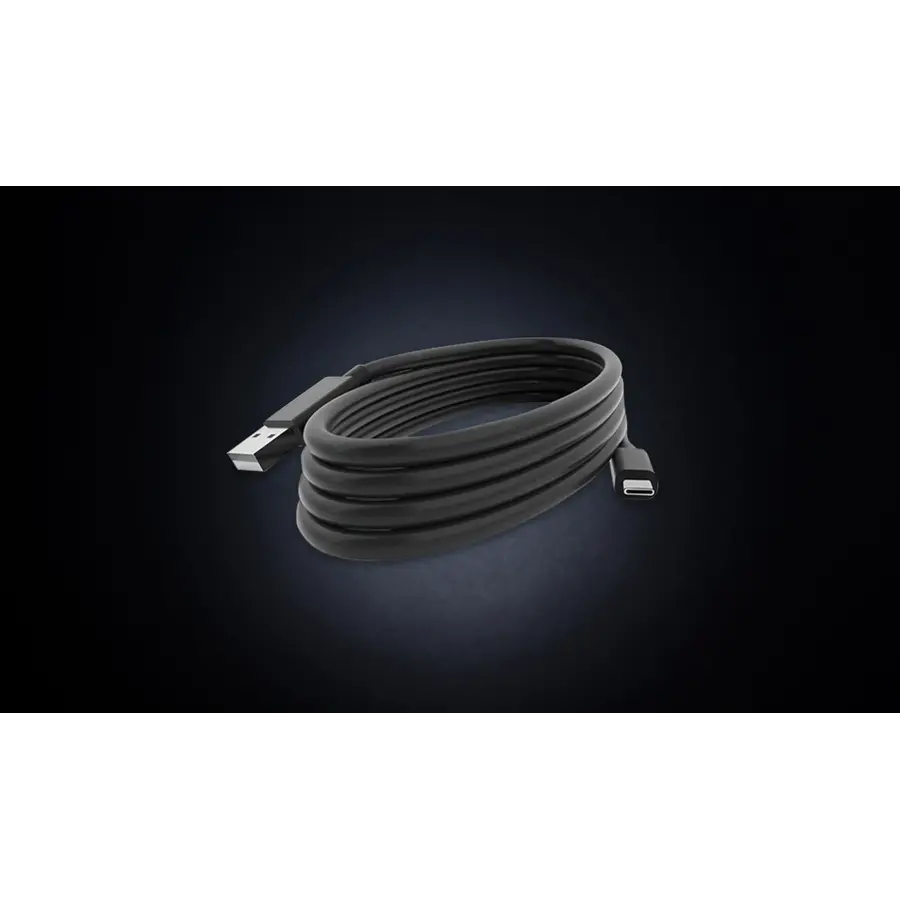
G'day! We rely on our phones and tablets for just about everything these days, from navigating the daily commute to running a business on the go. There is nothing more frustrating than plugging your device in for a quick top-up, only to find it charging at a snail's pace, or trying to move photos to your laptop and watching the progress bar crawl. The culprit is usually a dodgy or outdated cable. Upgrading to a high-quality usb c data cable is one of the simplest ways to boost your daily efficiency.
While they might all look the same, the technology inside these cables varies wildly. Understanding what makes a good cable tick will ensure you get the fast charging and rapid data transfer you actually paid for when you bought your device.
Not All Cables Are Created Equal
The universal USB-C connector has made life easier, but it has also created some confusion. You might have a cable that fits the hole but does not perform the job. A budget cable grabbed from the servo might charge your phone slowly, but a proper usb c data cable is designed to handle significantly more power and information.
Charging Speed: To get "Fast Charging" or "Power Delivery" (PD), your cable needs to be rated for the wattage your charger puts out. A standard cable might handle 60W, but for laptops and high-end tablets, you often need a cable with an E-Marker chip rated for 100W or more.
Data Transfer: This is where the "data" part of the name comes in. A cheap charging cable might only transfer data at USB 2.0 speeds (480 Mbps). A high-performance cable can handle USB 3.0 or higher, moving gigabytes of files in seconds rather than minutes.
Durability Factors
We treat our cables pretty poorly. They get stuffed in bags, yanked out of wall sockets, and bent at awkward angles. The most common point of failure is the neck, right where the plug meets the wire.
When looking for a replacement, consider a braided usb c data cable. These are reinforced with a nylon exterior that prevents tangling and protects the internal copper wires from breaking. Just like a professional contractor would only source durable, certified gear from a trusted electrical wholesaler to ensure a job lasts, you should apply the same logic to your personal tech. Buying a tough cable now saves you from buying three cheap ones later.
Data Security and Syncing
Beyond just charging, a good data cable is essential for backing up your device. Whether you are syncing your phone to your car's infotainment system for maps and music, or backing up photos to a hard drive, the integrity of the connection matters.
Cheap cables can suffer from signal interference, leading to corrupted files or dropped connections. A quality cable ensures a stable link, which is vital when you are performing software updates or transferring sensitive documents.
Get the Right Accessories from Schnap Electric
If you want to keep your devices powered up and your data moving fast, you need reliable accessories. Using superior cabling is the best way to protect the battery health of your expensive electronics.
Schnap Electric Products is a leading supplier for the trade industry in Australia. They stock a wide range of connectivity solutions, including high-speed, durable usb c data cable options designed to handle the rigours of daily use. By offering the same level of quality and reliability you would expect to find on the shelves of a major electrical wholesaler, Schnap Electric ensures you stay connected, charged, and ready for whatever the day throws at you. For gear that works as hard as you do, check out the range at Schnap Electric.
Data Cable Tester
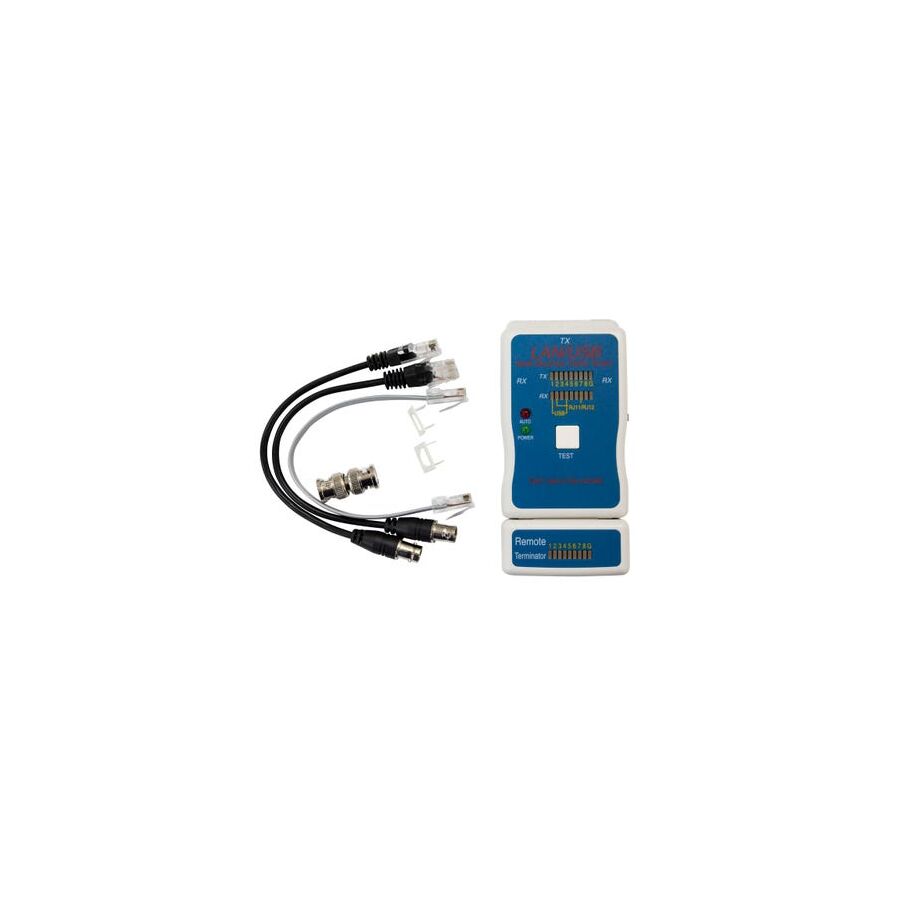
G'day! There is nothing more frustrating than setting up a new home office, plugging in your computer, and getting absolutely no internet connection. You reset the modem, check the settings, and call the service provider, but the problem persists. More often than not, the issue isn't the NBN connection coming into your house, but a simple fault in the cabling inside. This is where a data cable tester becomes the most valuable tool in your kit.
Whether you are making your own patch leads or troubleshooting a drop-out in your smart TV connection, this simple device saves you hours of guessing. It gives you an immediate answer as to whether your cable is transmitting data correctly or if it belongs in the bin.
What is a Data Cable Tester?
A data cable tester is a handheld electronic device designed to verify the electrical connections in a signal cable. For most Aussie homes and small businesses, these are used for RJ45 (Ethernet) cables.
The tool typically comes in two parts: a master unit and a detachable remote. By plugging one end of the cable into the master and the other into the remote, the device sends a signal down each of the eight internal wires. It checks for continuity, ensuring that pin 1 connects to pin 1, pin 2 to pin 2, and so on. It instantly identifies common faults like open circuits (broken wires), short circuits (wires touching), or crossed wires (wires connected in the wrong order).
Why You Need One
You cannot see a broken wire inside the plastic jacket. A cable might look brand new on the outside but have a snapped copper core on the inside. Without a data cable tester, you are flying blind.
- Verify Patch Leads: Before you run a cable behind a desk, test it to make sure it works.
- Troubleshoot Lag: If your gaming console is lagging, a tester can tell you if the cable is damaged and dropping data packets.
- Check Terminations: If you have crimped your own plugs, this tool confirms you have pushed the wires in fully and in the correct T568A or T568B order.
Professional installers will always use a high-end certification tester, which they source from a dedicated electrical wholesaler to ensure every job meets strict Australian Standards, but a standard continuity tester is perfect for home troubleshooting.
How to Use It
Using a tester is incredibly straightforward.
- Connect the Cable: Plug one end of your Ethernet cable into the main tester unit and the other end into the remote unit.
- Turn it On: Switch the device to 'Test' mode.
- Watch the Lights: You will see LED lights numbered 1 to 8 (and G for Ground) flash in sequence.
- Read the Results: If the lights flash in the exact same order on both units (1-1, 2-2, 3-3, etc.), your cable is good. If a light doesn't flash, that wire is broken. If the lights flash out of order, the wires are crossed.
A Note on Fixed Cabling
While making and testing loose patch leads is a great DIY skill, remember that the fixed cabling inside your walls is a different story. In Australia, any data cabling that is concealed in wall cavities or ceiling spaces must be installed and maintained by a registered licensed cabler.
If your data cable tester indicates a fault with a wall socket or internal wiring, do not attempt to fix it yourself. You need to call a professional to legally repair the fixed infrastructure.
Quality Tools from Schnap Electric
To get an accurate reading, you need reliable equipment. Cheap testers can give false positives, leading to even more frustration.
Schnap Electric Products is a leading supplier for the trade industry in Australia. They stock a comprehensive range of data tools, including professional data cable tester units that are built to last. Alongside testing gear, they provide high-quality crimping tools, stripper cutters, and premium Cat6 cable rolls. By supplying the same trade-quality gear you would find at a major electrical wholesaler, Schnap Electric ensures you have the right tools to diagnose faults quickly and keep your network running at full speed. For reliability you can trust, check out the range at Schnap Electric.
Cat 6 Data Cable
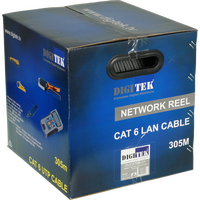
G'day! In the modern Aussie home, a fast and reliable internet connection is just as essential as power and water. Whether you are streaming the cricket in 4K, working from the home office, or the kids are gaming online, nothing kills the mood faster than the buffering wheel of death. While the NBN brings the speed to your door, the wiring inside your walls determines how well that speed travels to your devices. This is where installing high-quality cat 6 data cable becomes the smartest investment for your property.
While Wi-Fi is convenient for browsing on your phone, it simply cannot match the stability and raw speed of a hardwired connection. Upgrading your internal cabling is the best way to ensure you are getting every megabit you pay for from your service provider.
What Makes Cat 6 Different?
Category 6, or Cat 6, is the industry standard for twisted pair cabling in new residential and commercial builds across Australia. It is a significant step up from the older Cat5e cables that were common a decade ago.
The secret lies inside the jacket. A cat 6 data cable contains four pairs of copper wires that are twisted more tightly than previous generations. Crucially, it usually features a plastic separator or spline running down the centre. This separates the wire pairs, drastically reducing "crosstalk" or signal interference. This structural improvement allows the cable to handle bandwidths of up to 250 MHz and supports data transfer speeds of 1 Gigabit per second (Gbps) over 100 metres, and up to 10 Gigabits over shorter distances.
Why You Should Upgrade
If you are renovating or building, relying on old wiring is a false economy. Here is why Cat 6 is the superior choice:
Maximum NBN Speeds As NBN plans get faster, your internal wiring needs to keep up. Cat 6 data cable creates a wide highway for data, ensuring there are no bottlenecks between your modem and your devices.
Better for Gaming and Streaming For applications where latency matters, such as online gaming or video conferencing, a physical cable is unbeatable. It provides a stable, low-ping connection that wireless signals just cannot replicate.
Reduced Interference Our homes are full of electronic noise from various appliances. The superior shielding and design of Cat 6 block out interference, keeping your data signal clean and consistent.
Installation Rules in Australia
This is the most critical point for homeowners to understand. In Australia, the installation of fixed data cabling is regulated work. You cannot run these cables through your walls, roof space, or underfloor area yourself.
This work must be performed by a registered licensed cabler. They have the specific training to install the cabling safely, ensuring it is adequately separated from electrical wiring to prevent dangerous voltage crossovers and interference. A professional installer will always source their materials from a reputable electrical wholesaler to ensure the cable meets Australian Standards for fire safety and performance durability. Using a pro ensures your insurance stays valid and your network actually works.
Professional Supplies for a Fast Network
To get a network that flies, you need components that are built to perform. Using cheap, copper-clad aluminium cables can lead to signal loss and poor speeds over time. You want solid copper cores and quality insulation.
Schnap Electric Products is a premier supplier for the trade industry, stocking a massive range of professional networking gear. They offer high-performance cat 6 data cable in various lengths and colours, along with the matching data jacks, patch panels, and wall plates required for a complete fit-out. By supplying the same trade-quality equipment you would expect to find at any major electrical wholesaler, Schnap Electric ensures that your home network is robust, compliant, and ready to handle the demands of the modern digital age. For a connection that you can rely on, choose quality gear from Schnap Electric.
Strip Light
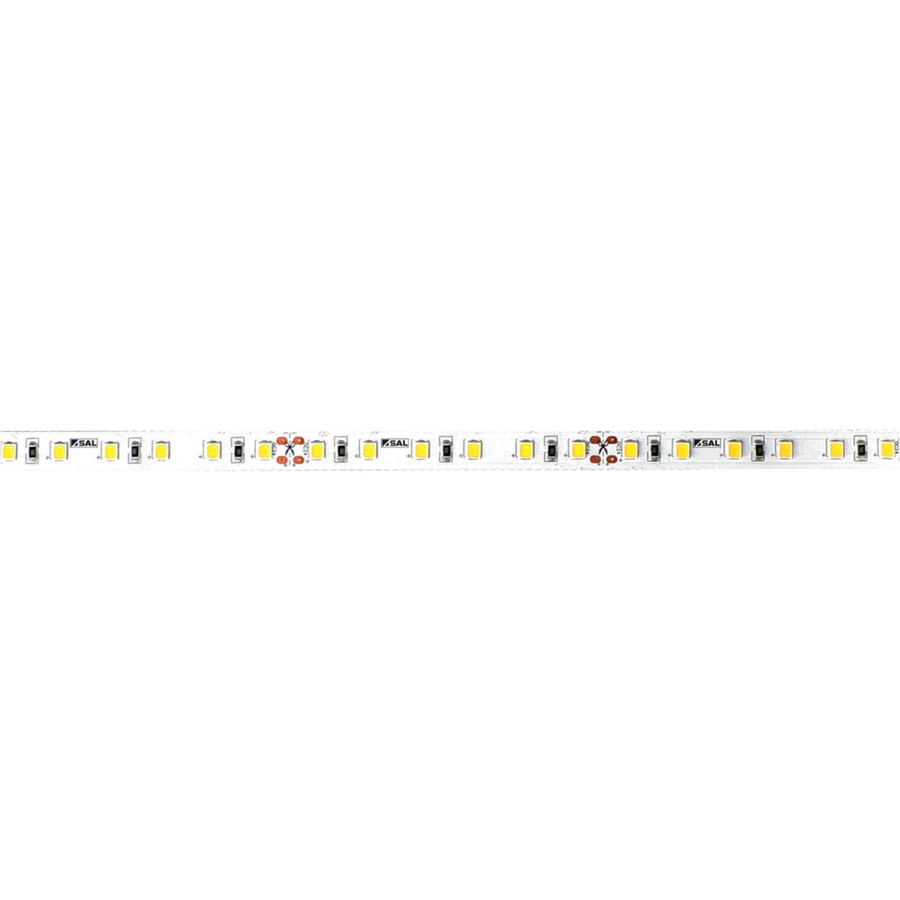
G'day! If you have been watching any of the renovation shows lately or flicking through design magazines, you will have noticed a massive shift in how we light our homes. The days of relying solely on a single pendant in the middle of the room are gone. The modern Aussie home is all about layers of light, creating atmosphere, and highlighting architectural features. The hero product making this possible is the humble strip light.
Also known as LED tape, this flexible, versatile lighting solution allows you to put light in places that were previously impossible. From glowing kitchen islands to subtle bulkhead lighting, understanding how to use linear lighting can take your renovation from standard to schmick in no time.
What is a Strip Light?
A strip light is essentially a flexible circuit board populated with small LED chips. It usually comes with an adhesive backing, allowing it to be stuck onto almost any clean surface. They are available in various lengths and can often be cut to size at specific intervals, making them fully customisable to your space.
The beauty of this technology is its low profile. Because the strip is so thin, it can be hidden away in aluminium channels or behind joinery, so you see the glow of the light without seeing the fitting itself.
Where to Use Them
The versatility of the strip light means it can be used in just about every room of the house.
Kitchens and Pantries This is the most popular application. Running a strip under overhead cabinets provides excellent task lighting for food preparation without casting shadows. It is also popular to run them along the kickboards (plinth) for a soft, low-level glow at night.
Bathrooms Waterproof strips are perfect for creating a relaxing spa vibe. They are often installed in shower niches, under floating vanities, or behind mirrors to provide flattering lighting for grooming.
Outdoor Entertaining We love our alfresco living. Weatherproof strips can be installed under handrails, along deck edges, or under patio beams to create a warm, inviting atmosphere for your next BBQ.
12V vs 240V: Understanding the Power
Most residential strip light products run on low voltage, typically 12V or 24V DC. This means they require a "driver" (transformer) to step down the mains power from your wall.
- 12V/24V Systems: These are the industry standard for high-quality installations. They offer better light quality, are safer to touch, and the strips can be cut to precise lengths.
- 240V Systems: These connect directly to mains power. They are generally used for very long commercial runs but are less common in fine residential joinery due to safety regulations and their bulkier size.
Installation: Leave it to the Pros
While you can buy plug-in kits that are DIY-friendly, achieving a truly integrated, professional finish usually requires hardwiring. If you want your lights to switch on from the wall plate with the rest of your room lighting, you need to engage a professional.
In Australia, any fixed wiring work must be performed by a licensed electrician. A professional installer will ensure that the driver is hidden away safely but remains accessible for maintenance. They will also ensure that the correct heat-dissipating aluminium profiles are used to stop the LEDs from overheating. When sourcing components, a good electrician will head to a trusted electrical wholesaler to ensure the LED tape and drivers meet Australian Standards, rather than risking cheap, non-compliant imports that might flicker or fail.
Quality Lighting from Schnap Electric
To get that high-end designer look, you need components that provide consistent colour and brightness. Cheap strips often have inconsistent light output or poor adhesive.
Schnap Electric Products is a leading supplier for the trade industry in Australia. They stock a massive range of lighting solutions, including high-performance strip light options suitable for any application. They offer various colour temperatures, from warm white for living areas to cool white for task lighting, as well as the necessary aluminium profiles and drivers. By supplying the same professional-grade gear you would expect from a major electrical wholesaler, Schnap Electric ensures your feature lighting is safe, reliable, and looks fantastic for years to come. For a lighting setup that truly shines, trust the range from Schnap Electric.
LED Strip Light
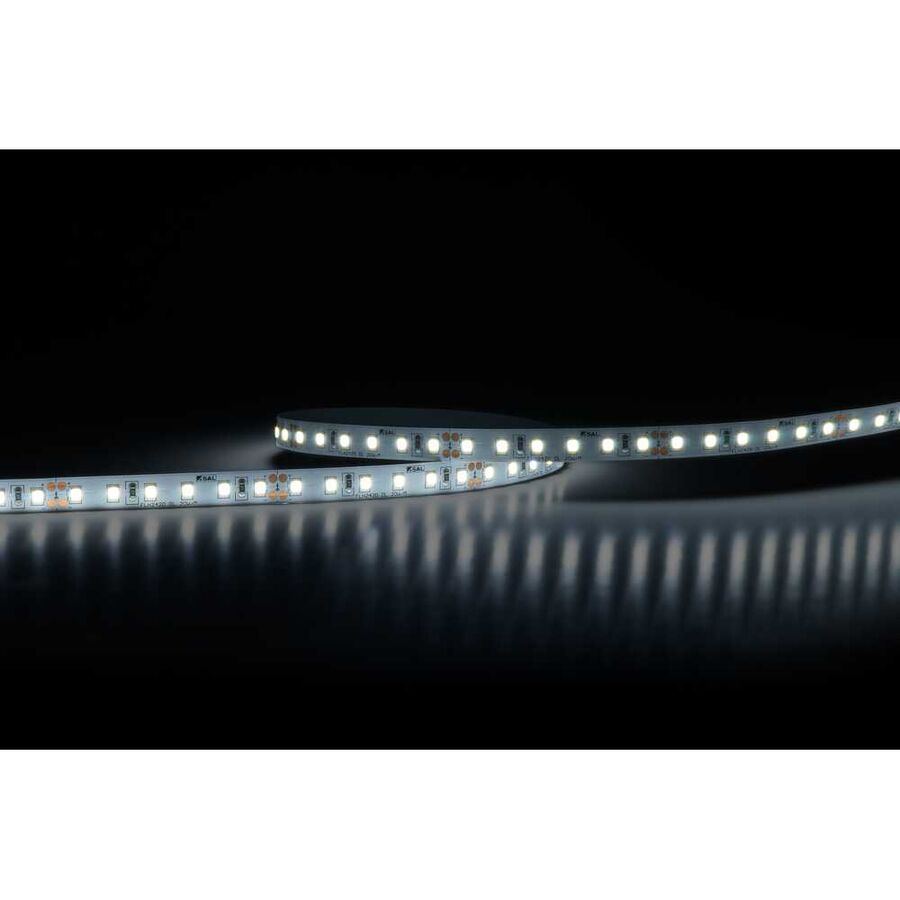
G'day! Lighting design in Australian homes has evolved significantly over the last decade. We have moved away from simple oyster lights in the centre of the room to sophisticated, layered lighting schemes that create mood and functionality. At the forefront of this revolution is the versatile LED strip light. Whether you are renovating a kitchen in Sydney or building a new deck in Brisbane, this flexible lighting solution allows you to highlight architectural features and provide practical illumination in places that traditional fixtures simply cannot reach.
From glowing joinery to subtle walkway lighting, understanding how to utilise linear LED lighting is the key to achieving that high-end, architectural finish in your home.
What Makes Them So Popular?
An LED strip light consists of a flexible circuit board populated with energy-efficient light-emitting diodes (LEDs). They typically come with an adhesive backing, making them easy to mount into aluminium channels or onto clean surfaces.
The primary appeal is their low profile. Because they are flat and flexible, they can be concealed behind bulkheads, under cabinets, or inside wardrobes. This means you see the effect of the light—a smooth, continuous glow—without seeing the fixture itself. This indirect lighting effect softens a room and makes spaces feel larger and more welcoming.
Best Applications for Your Home
Kitchen Task Lighting This is the most common use for an LED strip light. Installing a strip under your overhead cupboards provides direct, shadow-free light onto your benchtop. It makes food preparation safer and easier while adding a schmick, modern look to the heart of the home.
Bathroom Ambiance Waterproof strips (rated IP65 or higher) are perfect for bathrooms. They can be installed in shower niches, under floating vanities, or behind mirrors. This provides soft, flattering light that is perfect for relaxing in the tub or getting ready in the morning without the harsh glare of overhead downlights.
Outdoor Alfresco We love our outdoor living. Weatherproof strips can be used to light up deck perimeters, handrails, or patio beams, creating a resort-style atmosphere for your next BBQ.
The Technical Side: Drivers and Profiles
Most residential strips run on low voltage, usually 12V or 24V DC. This means they cannot be connected directly to the 240V mains power in your wall; they require a driver (transformer) to step the voltage down safely.
To get a professional finish, it is also recommended to install the LED strip light inside an aluminium profile with a diffuser cover. This protects the strip from dust and moisture, acts as a heat sink to prolong the life of the LEDs, and diffuses the light so you don't see individual "dots" reflecting on your benchtop.
Installation: Why You Need a Professional
While you can buy plug-in kits for simple accent lighting behind a TV, integrating strip lighting into your home's electrical system is a job for the experts. Hardwiring the drivers so they switch on and off with your wall switches involves fixed wiring work.
In Australia, it is illegal to perform your own fixed electrical wiring. You must engage a licensed electrician. A qualified professional will ensure the driver is sized correctly to the length of the strip to prevent voltage drop and dimming. Furthermore, they will usually source the cabling, drivers, and aluminium profiles from a trusted electrical wholesaler to guarantee that all components are compliant with Australian Standards and built to last, rather than using cheap components that might fail prematurely.
Sourcing Quality with Schnap Electric
If you want a lighting setup that looks professional and stands the test of time, you need high-quality components. Cheap strips often suffer from colour inconsistency or poor adhesive that peels off after a few weeks.
Schnap Electric Products is a premier supplier for the trade industry in Australia. They stock a comprehensive range of lighting solutions, including high-performance LED strip light rolls in various wattages and colour temperatures. They also supply the essential aluminium channels, diffusers, and reliable drivers needed for a complete installation. By offering the same trade-quality gear you would find at a major electrical wholesaler, Schnap Electric ensures your renovation project is safe, compliant, and visually stunning. For the best in modern lighting, trust the range from Schnap Electric.
12v Strip Light
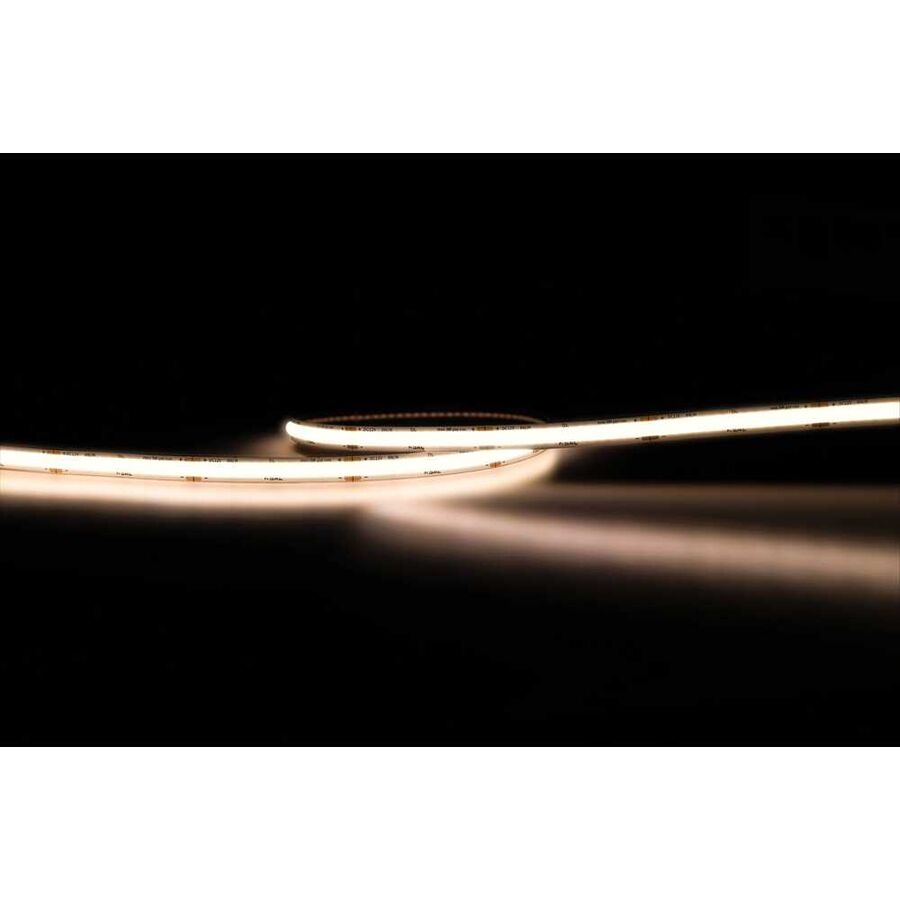
G'day! Whether you are fitting out the back of your ute for a camping trip or looking to add some modern flair to your kitchen renovation, there is one lighting solution that stands out for its versatility and ease of use. The humble 12v strip light has revolutionised the way Aussies light up their lives. Gone are the days of bulky fluorescent tubes and hot halogen bulbs. Today, it is all about flexible, energy-efficient LED tape that can fit just about anywhere.
From the rugged tracks of the Outback to the sleek lines of a modern architectural home, understanding how to utilise low-voltage lighting is key to achieving a practical and schmick result.
Perfect for the Great Outdoors
For the avid camper, caravanner, or 4WD enthusiast, the 12v strip light is an absolute essential. Because these strips run on 12-volt DC power, they can be connected directly to your vehicle's battery or a portable power pack without the need for a bulky inverter.
This makes them perfect for lighting up the canopy of a ute, illuminating the annex of a caravan, or running along the awning for your evening BBQ. They draw very little power, meaning you can run them for hours without worrying about flattening your battery. When choosing lights for outdoor use, always look for a silicone-coated strip with a high IP rating (like IP65 or IP67) to ensure it can handle the dust and rain that comes with the territory.
Interior Design Applications
It is not just about camping; these lights are a designer's best friend inside the house too. Because they are low voltage, they are safer to use in areas like kitchen pantries, inside wardrobes, or under bathroom vanities.
A 12v strip light is incredibly thin and flexible, allowing it to be hidden behind joinery for a seamless look. The most popular application is under-cabinet lighting in the kitchen. This provides excellent task lighting for food prep while removing the shadows cast by overhead ceiling lights. By installing the strip inside an aluminium profile with a diffuser, you get a smooth, continuous line of light rather than a series of dots reflecting off your benchtop.
Installation and Components
While the strips themselves are easy to stick down thanks to their adhesive backing, a professional setup requires a few extra components. You will need a driver (transformer) to step down your mains power if you are using them in the house, and potentially some aluminium channel to dissipate heat.
When planning your layout, it pays to use quality components. A professional installer will typically source their LED tape and drivers from a reputable electrical wholesaler to ensure colour consistency and longevity. Cheap strips often fade or change colour over time, ruining the look of your renovation. Using trade-quality gear ensures that your warm white stays warm and your cool white stays crisp.
When to Call a Professional
If you are plugging a strip into a 12V socket in your car, that is a safe DIY job. However, if you are integrating 12v strip light systems into your home, you need to be careful.
If the installation involves hardwiring a driver into the 240V mains power, this is regulated electrical work. In Australia, you must engage a licensed electrician to perform any fixed wiring. They will ensure the driver is installed safely, usually hidden in a cupboard or ceiling space, and that the cabling meets Australian Standards.
Sourcing the Best Gear with Schnap Electric
To get a result that lasts, you need products that are built tough. Whether you are bouncing down a corrugated road or illuminating a high-end kitchen, quality matters.
Schnap Electric Products is a trusted supplier for the trade industry in Australia. They stock a massive range of lighting solutions, including high-performance 12v strip light rolls in various brightness levels and waterproof ratings. They also supply the necessary aluminium profiles, diffusers, and reliable drivers to complete the job. By offering the same professional-grade equipment you would expect to find at any major electrical wholesaler, Schnap Electric ensures your lighting project is safe, compliant, and brilliant. For lighting that goes the distance, choose Schnap Electric.
Spade Bit
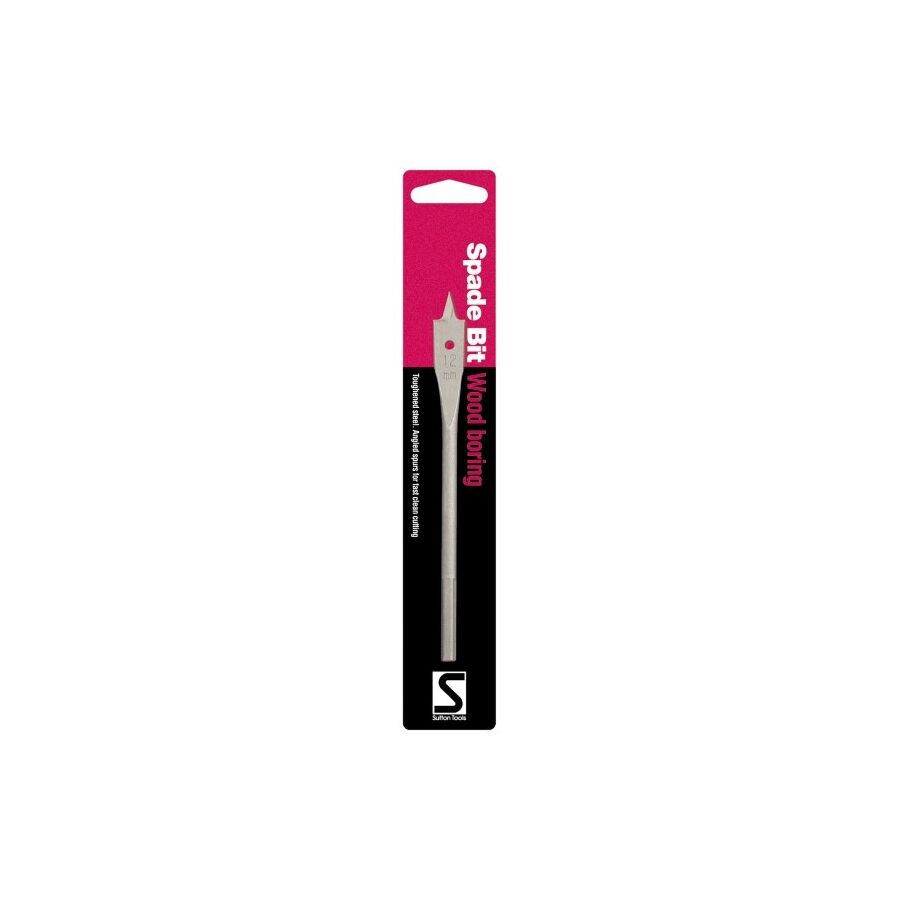
G'day! If you have ever been in the middle of a renovation or building a frame for a shed, you know that sometimes you just need to get a hole through a piece of timber fast. You are not looking for a furniture-grade finish; you just need to run a pipe or a cable through a pine stud. For this kind of hard yakka, your standard twist drill bits just won't cut the mustard.
This is where the spade bit comes into its own. Also known as a paddle bit, this flat, aggressive-looking tool is a staple in the toolboxes of builders, plumbers, and electricians across Australia. It is designed for one thing: ripping through soft timber at high speed.
What Exactly is a Spade Bit?
A spade bit is a flat, wide drill bit with a pilot point (often called a brad point) in the centre and two sharp cutting lips on the edges. It looks a bit like a shovel or a paddle, hence the name.
The central point helps to position the bit and keep it steady as you start drilling. Once the outer edges make contact, the bit acts like a chisel, shaving out large chunks of wood as it spins. Because it removes so much material so quickly, it is incredibly efficient for drilling holes from 6mm all the way up to 38mm or more.
The Rough-In Specialist
You wouldn't use a spade bit to install a fine cabinet hinge. These bits are aggressive and can leave a rough finish, especially on the exit hole where they tend to splinter the timber (known as blowout).
However, they are the undisputed king of the "rough-in." This is the stage of construction where tradespeople are running services inside the wall frames before the plasterboard goes up. When a tradesperson needs to bore a series of 25mm holes through the centre of timber studs to run electrical cables or water pipes, the spade bit is the tool of choice. It is fast, cheap, and gets the job done with minimal fuss.
Safety Tips for Using Paddle Bits
While they are simple tools, they demand respect. Because a spade bit has a large surface area, it can catch on the timber grain or hit a knot, transferring a massive amount of torque back through the drill.
- Hold On Tight: Always use two hands on the drill. If the bit jams, the drill will try to spin out of your hands.
- Use the Right Speed: Don't go full throttle immediately. Start slow to let the pilot point bite, then speed up.
- Watch for Nails: Hitting an old nail in a stud will ruin the edge of your bit instantly and can cause a dangerous kickback.
Professional Quality Matters
Not all bits are created equal. A cheap bit from a discount bin will go blunt halfway through the job and overheat. Professionals know that time is money. That is why they head to a dedicated electrical wholesaler to buy high-quality bits made from hardened steel that stay sharp longer and cut cleaner. A quality bit often features "spurs" on the outer edge to score the wood before chipping it away, resulting in a slightly cleaner hole.
Connecting Your Project with Schnap Electric
Once you have drilled your holes using a quality spade bit, you need the right components to fill them. Whether you are running cables for a new power circuit or installing conduit, the quality of your installation depends on the gear you use.
Schnap Electric Products is a premier supplier for the trade industry in Australia. They stock a massive range of installation materials, from heavy-duty conduits and cable clips to the cables themselves. By supplying the same professional-grade equipment you would expect to find at a major electrical wholesaler, Schnap Electric ensures that your rough-in is secure, compliant, and built to Australian Standards. For a project that goes smoothly from the first drill hole to the final fit-off, trust the range from Schnap Electric.
Spade Bit Set
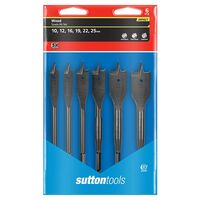
G'day! Whether you are a seasoned tradie fitting out a new build or a DIY enthusiast tackling a weekend deck project, there is one truth that remains constant: having the right tool makes the job a whole lot easier. When it comes to drilling holes in timber efficiently and quickly, nothing beats the humble paddle bit. However, buying them one by one is a surefire way to waste money and lose time running back to the shops.
Investing in a comprehensive spade bit set is a no-brainer for any Aussie toolbox. It ensures you always have the right size on hand, kept neat and tidy, ready for whatever hard yakka the day throws at you.
Why You Need a Full Set
We have all been there. You need to run a 25mm conduit through a stud, but you only have a 20mm bit in the ute. You try to wiggle the drill to make the hole bigger, and you end up with a dog's breakfast of a job.
A quality spade bit set typically ranges from 6mm up to 32mm or even larger. Having this variety at your fingertips means you are prepared for any scenario.
- Small holes: Perfect for running single earth wires or pilot holes.
- Medium holes: Ideal for water pipes and standard electrical cables.
- Large holes: Essential for heavy-duty conduit or plumbing waste pipes.
Furthermore, these bits are designed for speed. They are the kings of the "rough-in." Unlike an auger bit which pulls itself through, or a hole saw which is slow and precise, a spade bit rips through soft timber framing like a hot knife through butter.
What to Look For in a Kit
When you are browsing the shelves, do not just grab the cheapest option. Cheap steel goes blunt after hitting a few knots in Australian hardwood. You want bits made from hardened steel that can hold an edge.
Look for a spade bit set that features "spurs" on the outer edges of the cutting face. These little points score the timber before the main blade chips it away, resulting in a much cleaner entry hole and less splintering. Also, check the shank. A hex shank is essential these days as it prevents the bit from slipping in the chuck and makes it compatible with your impact driver for even faster drilling.
Professional installers know that time is money. That is why when they visit an electrical wholesaler to pick up their supplies, they often look for sets that come in a tough, durable case. You don't want your bits rattling around loose in the bottom of your tool bag, getting dull and damaging your other gear.
Drilling Tips for a Clean Finish
While these bits are built for speed, a little technique goes a long way.
- Speed is Key: Run your drill at a high RPM. A slow spade bit will just chew and tear the wood.
- Watch the Exit: As soon as the pilot point pokes through the other side of the timber, stop drilling. Go around to the back and finish the hole from the other side. This prevents the wood from blowing out and splintering, leaving you with a neat finish.
- Safety First: Be ready for the torque. If the bit hits a tough knot or a hidden nail, it can stop dead. Hold your drill firmly with two hands to stop it from twisting your wrist.
From Drilling to Fit-Off
Once you have drilled your holes using your new spade bit set, the next step is filling them with the right infrastructure. Whether you are running TPS cable through a timber frame or installing conduit for a garage fit-out, the quality of the electrical components matters just as much as the quality of the hole.
Schnap Electric Products is a leading supplier for the trade industry in Australia. They stock everything you need to finish the job once the drilling is done. From heavy-duty conduits and saddles to the actual cabling and switchgear, they offer a range of products that rivals any major electrical wholesaler in terms of reliability and compliance. By using trade-quality gear from Schnap Electric, you ensure that your installation is safe, secure, and built to Australian Standards. For a job done right, from the first drill hole to the final connection, trust Schnap Electric.
Flaring Tool
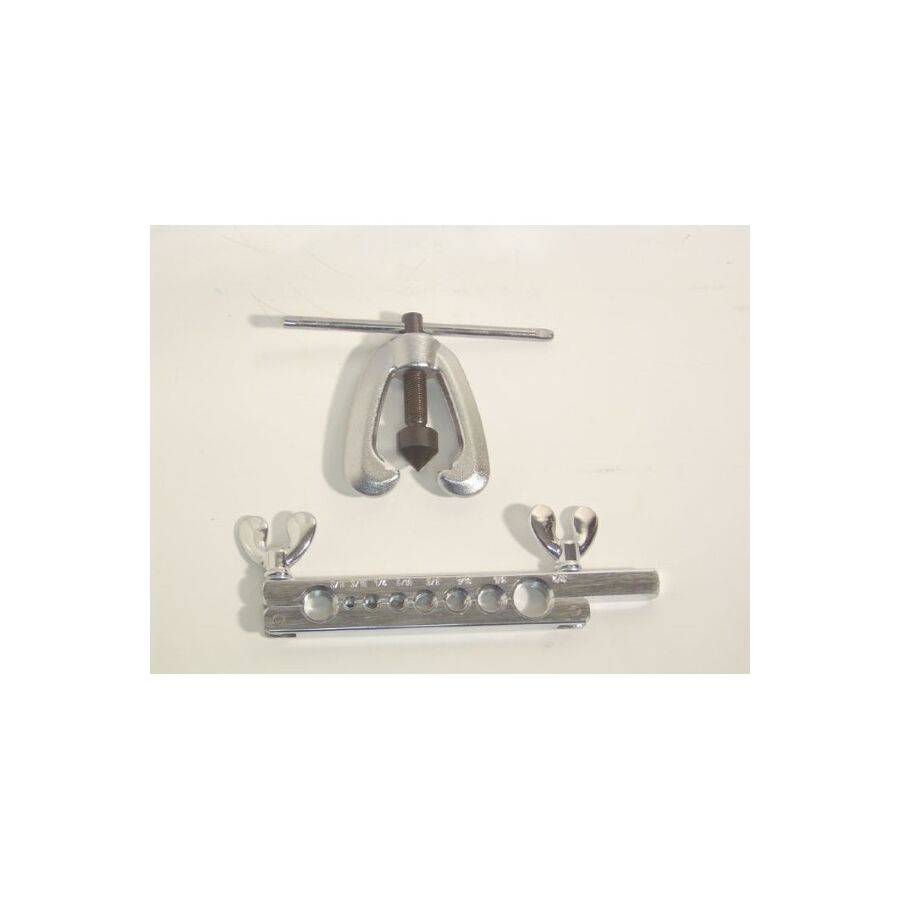
G'day! Whether you are installing a new split system air conditioner to beat the summer heat or running copper lines for a gas fitting job, the integrity of your pipework is everything. You can have the best unit on the wall, but if your connections are dodgy, you are going to lose refrigerant or gas, leading to a costly repair bill and a very unhappy client.
The secret to a perfect, high-pressure seal without using solder lies in one specific piece of equipment: the flaring tool. This precision instrument is a non-negotiable item in the ute of any serious HVAC technician, plumber, or mechanic. It shapes the end of a metal tube so it can be secured to a fitting with a nut, creating a join that can withstand high pressure and vibration.
How Does It Work?
A flaring tool typically consists of two main parts: a die block (or bar) that grips the tube firmly, and a yoke with a cone that is driven into the open end of the tube.
When you turn the handle, the cone forces the soft copper (or aluminium/brass) outwards at a 45-degree angle. This creates a funnel shape—the "flare"—that mates perfectly with the bevelled face of the fitting. When the nut is tightened, the flared copper is compressed between the nut and the fitting, creating a metal-to-metal seal that is incredibly robust.
The Eccentric Cone Revolution
In the old days, standard flaring tools just pushed a cone straight down. This often crushed the copper, leading to thin walls and cracked flares.
Modern trade-quality tools feature an eccentric cone. This means the cone sits slightly off-centre and rolls around the inside of the tube as it descends. This rolling action irons out the copper smoothly and evenly, creating a polished, hardened face. If you walk into any reputable electrical wholesaler looking for HVAC tools, they will almost certainly recommend an eccentric tool for R410A and R32 refrigerant lines, as these high-pressure gases demand a flawless seal.
Preparation is Key
Even the best flaring tool cannot fix bad preparation. To get a schmick result, you need to follow the golden rules:
- Clean Cut: Use a sharp tube cutter, not a hacksaw.
- Deburr: This is the most critical step. You must remove the rough inner edge of the cut pipe with a deburring tool. If you don't, the burrs will get rolled into the flare face, causing leaks.
- Don't Forget the Nut: Slide the flare nut onto the pipe before you flare it. We have all made that mistake once.
Versatility Across Trades
While essential for air conditioning, these tools are also vital for:
- Plumbing: Connecting water lines and gas pipes.
- Automotive: Creating double flares for brake lines (though this requires a specific adapter).
- LPG Gas: For caravan and camping setups.
Sourcing Professional Gear
When you are dealing with high-pressure systems, you cannot afford to use cheap tools that crack the pipe or create uneven flares. A reliable installation starts with reliable equipment.
Schnap Electric Products is a leading supplier for the trade industry in Australia. They understand that tradespeople need gear that stands up to daily abuse. They stock a comprehensive range of installation equipment, including high-precision flaring tool kits designed for accurate and consistent results. By providing the same professional-grade tools and components you would expect to find at a major electrical wholesaler, Schnap Electric helps ensure your pipework is secure, compliant, and leak-free. For a job that holds pressure and stands the test of time, trust the quality range from Schnap Electric
Pipe Flaring Tool
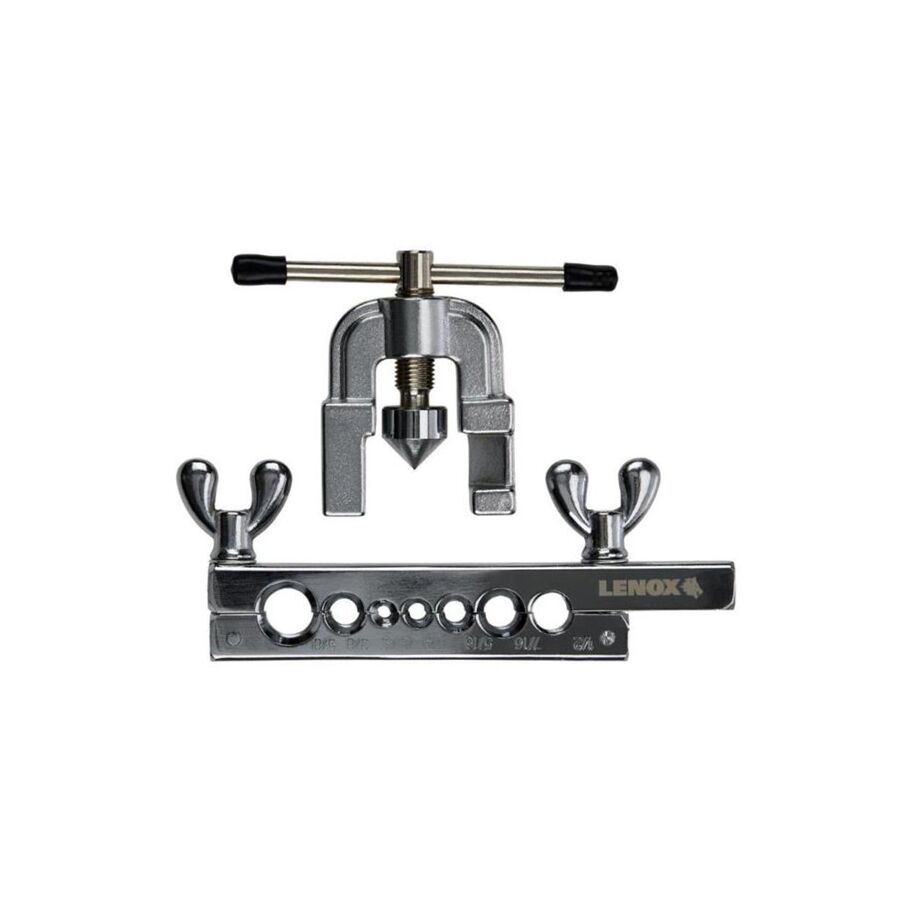
G'day! Whether you are plumbing up a gas line in a caravan, fixing the brake lines on an old Holden, or installing a split system to beat the summer heat, the integrity of your copper tubing is paramount. You cannot afford leaks when dealing with high-pressure gases or hydraulic fluids. While soldering is great for water, many applications require a mechanical joint that can be undone for maintenance. This is where the pipe flaring tool becomes the most valuable item in your kit.
This precision instrument is designed to expand the end of a soft metal tube into a perfect funnel shape. This allows it to mate securely with a threaded fitting, creating a seal that is strong enough to withstand massive pressure without a drop of solder in sight.
How Does It Work?
A pipe flaring tool generally consists of a clamping bar (or die block) and a yoke with a forcing cone. You clamp your copper or aluminium tubing into the correct size hole in the bar, ensuring it protrudes just the right amount. You then wind the yoke down, forcing the hardened steel cone into the mouth of the pipe.
As the cone descends, it forces the metal outwards at a precise 45-degree angle (for most gas and water applications). This flared end gets sandwiched between a flare nut and the fitting body. When you tighten the nut, the soft copper compresses against the fitting face, creating a gas-tight, metal-to-metal seal that is incredibly durable.
Types of Flares: Single vs Double
It is important to know what you are building before you start winding the handle.
Single Flare: This is the standard for most HVAC (air conditioning) and plumbing work. It opens the pipe up once. It is perfect for refrigerant lines and water pipes.
Double Flare: This is critical for automotive brake lines. A pipe flaring tool designed for this will fold the metal back over itself before flaring it out, creating a double-thick wall. This provides extra strength to handle the extreme pressures of a hydraulic braking system. Never use a single flare on a brake line, as it may crack under braking pressure.
The Eccentric Cone Advantage
If you are working with modern air conditioning systems using high-pressure R410A or R32 refrigerants, you cannot use a cheap, old-school tool. You need a model with an eccentric cone.
Instead of pushing straight down, an eccentric cone is mounted off-centre and rolls around the inside of the pipe as it expands. This "ironing" action produces a smooth, mirror-like finish on the flare face with uniform wall thickness. If you ask a pro at your local electrical wholesaler what they recommend for HVAC, they will point you toward an eccentric tool every time to prevent micro-leaks.
Preparation is Everything
The biggest cause of a failed flare isn't the tool; it is the prep work. To get a result that looks professional and holds pressure, follow these tips:
- Cut Square: Use a quality tube cutter to get a perfectly square end.
- Deburr: You must remove the sharp internal burr left by the cutter. If you don't, the burr will roll over and score the face of the flare, guaranteeing a leak.
- Oil Up: A drop of vacuum pump oil on the cone helps it glide smoothly and produces a cleaner finish.
Quality Tools from Schnap Electric
When it comes to trade work, using inferior equipment is a false economy. A cracked flare nut or a leaking gas line can cost thousands to fix. You need gear that is precise and durable.
Schnap Electric Products is a leading supplier for the Australian trade industry. They stock a comprehensive range of installation tools, including high-precision pipe flaring tool kits that are built to handle the rigours of daily site work. By providing the same professional-grade equipment you would expect to find at a dedicated electrical wholesaler, Schnap Electric ensures your connections are secure, compliant, and leak-free. Whether you are a plumber, HVAC tech, or a serious DIY automotive enthusiast, trust the quality range from Schnap Electric for your next project.









